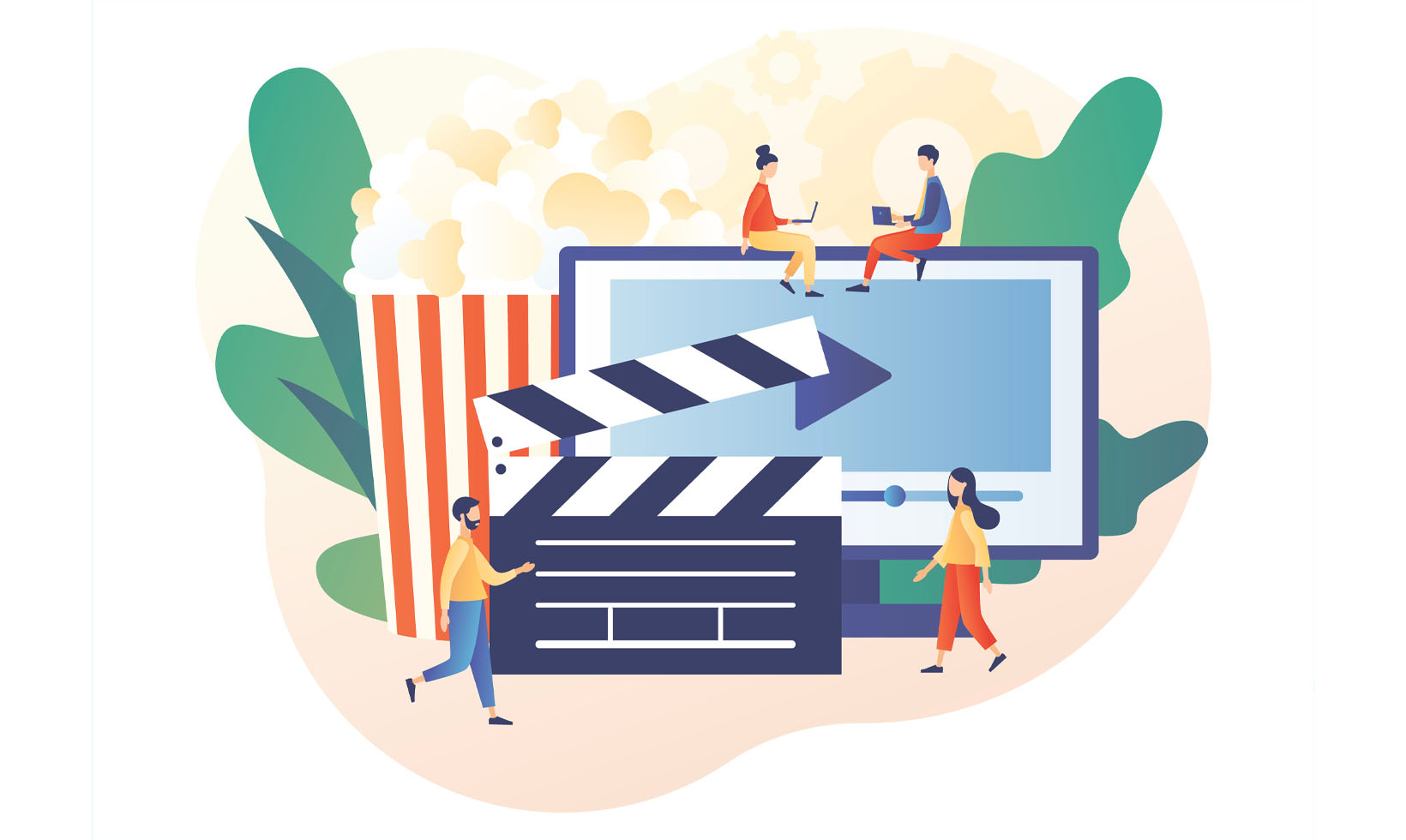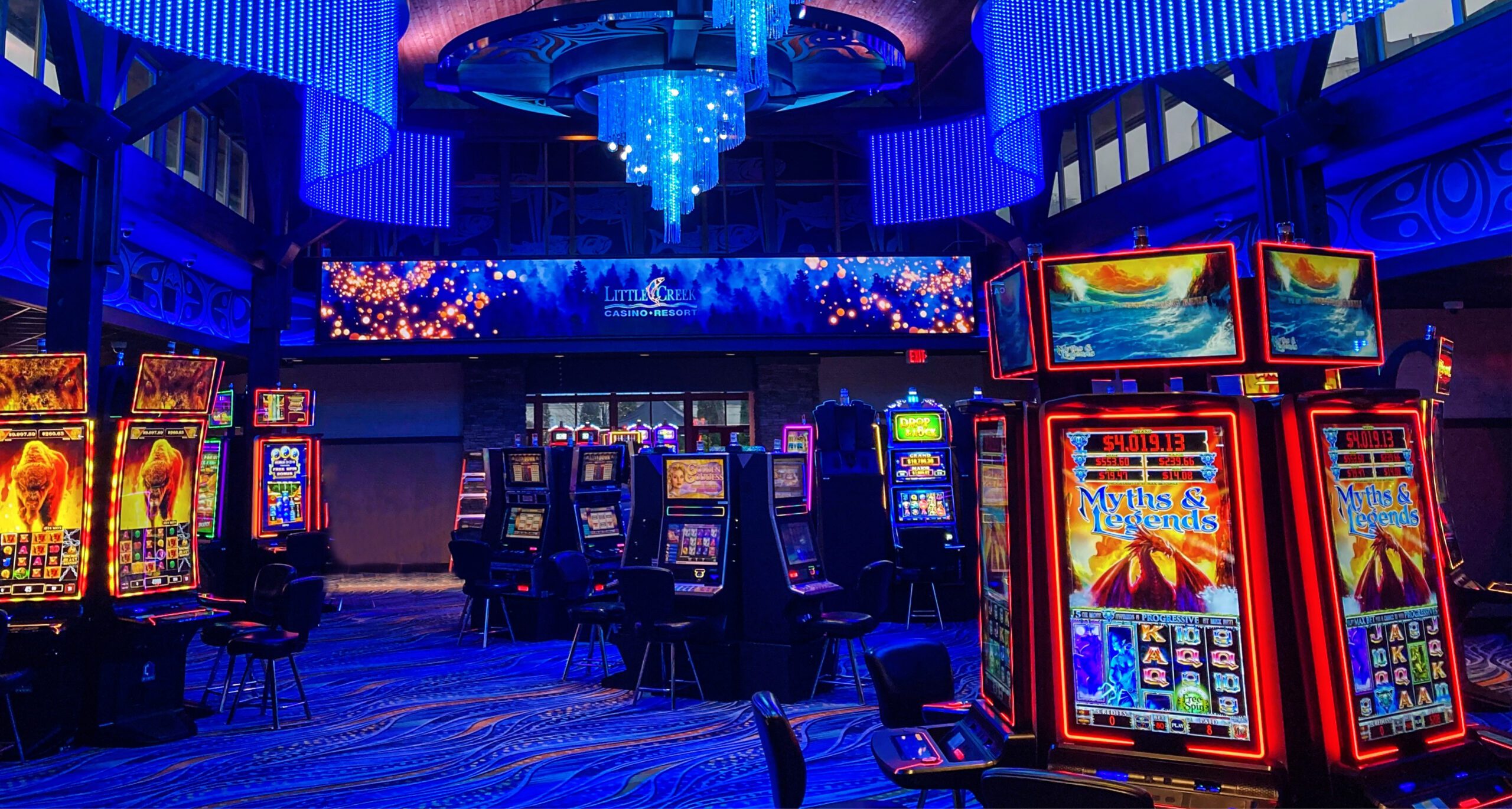4 Considerations When Planning a Connected, End-to-End Casino Guest Experience

Unifying Audio, Visual, Content, and Control
Connected, end-to-end delivery of audio, visual, and content is essential to delivering the best possible casino guest experience. Whether you’re creating a technology solution for a new casino or upgrading your existing infrastructure, careful and comprehensive planning with your technology partner puts control in your hands, enabling you to drive guest behavior to achieve your strategic objectives.
This article highlights key considerations when planning your casino guest experience. Use it to guide your thinking and your conversations with your internal teams and external partners. By ensuring that important issues are incorporated into the planning process, all partners and stakeholders will collaborate more smoothly to make your vision possible.
1. Ask the right questions
When planning a casino project, the best place to begin is at the end – by establishing what you want to accomplish. To ensure everyone is on the same page regarding goals and strategic objectives, start by asking yourself the following questions. Then share the answers with your solutions provider.
- What’s your 3-year plan? This question helps identify your expectations for the longevity of your desired technical solution.
- Will you be creating an entirely new space or remodeling an existing one? If you’re going to build on an existing audio-visual infrastructure, indicate which of your current systems (including digital signage, LED displays, IPTV (Internet Protocol Television), AV (Audio Visual), etc.) you expect to retain.
- How do you plan on drawing people into the space?
- Who will be operating the new technology solution? Ease of use will be an especially high priority if a larger number of staffers – particularly high-turnover entry-level personnel – will be operating the system.
- Is this going to be a single project, or is it just a phase in a master plan to achieve a larger vision?
Undoubtedly there will be more questions, some of which you may never have considered. That’s okay. It’s your technology partner’s job to think of them. Your job is to provide responses that are as accurate as possible because each will inform what comes next.
2. Consider Budget

If you have a defined budget for your project, share it with your technology partner as early as possible in the process to ensure that your ambitions align with your budget.
Some questions you should be prepared to answer:
- Is this a quick-fix project, a bridge to a bigger technology solution, or a full-on remodel or revamp? Knowing how you approach this issue will help your technology partner devise a solution that can be executed within your budgetary constraints and timeline.
- Are you going for a “wow factor” in this project, or are you just trying to fix a problem? Put another way: Are you trying to address a specific need – say, unreliable IPTV feeds – or do you have a larger vision for a comprehensive casino guest experience that will be unique to your property?
- Will the project be treated as a CapX or OpX? This is important because your technology partner may be able to work with you to accommodate the specific requirements of each funding avenue.
- Have you considered the cost of content creation? When budgeting for a customized AV technology solution, plan on devoting a portion of your year-1 budget to content.
A smart, conscientious partner will probe to ensure you’ve thought through the full financial implications of your vision. Some clients are hesitant to provide budgetary figures up front, but clarity and forthrightness translate to a much more efficient work process and ensure an affordable outcome.
3. Develop a plan for each component of the process
At this point, your partner will have a solid idea of the goal you want to achieve. Now it’s time to create the actual solution that will bring your vision to life. A helpful way to move forward is by examining the project’s component parts.
Planning the video component

Many casinos operate with legacy systems whose components have just one purpose. “Display A” may be devoted to digital signage and can’t show TV. “Display B “may show TV but can’t do double duty as digital signage.
Legacy systems often feature a large number of monitors with no centralized control. Accordingly, operators need to use individual remotes to operate the gear, resulting in inefficiency and a drop-off in system use. AV over IP enables multiple uses of displays, and it enables operators to control them from almost anywhere. A shift IP-based TV connected via cat5 or cat6 enables a vast range of programming that can be controlled easily over your network.
Instead of a trio of adjacent displays showing the same message, imagine if they could communicate three different, equally important messages. Think, too, about how much easier it would be to control displays from a central interface. And what if you could automate content delivery? Auto-scheduling alone is a positive step toward crafting custom messaging directed to specific audiences at specific times.
Planning the content component

A video wall or LED-wrapped pillar can stop people in their tracks, but content is what keeps casino guests talking and imprints the experience in their memory. Putting up a 4K display is one thing, but the “wow” comes from what you do with it.
From wayfinding to promotional and marketing content, to the use of display technology in architecture and design, the experience you provide depends on the quality of the content you deliver. In that first year, you’ll have plenty of new content to create and existing content to reformat, so be mindful of the earlier statement: Plan to devote a portion of your equipment purchase to content in year 1.
Other questions your partner will ask as part of the planning process:
- How important is having customized content that helps deliver a unique, multi-sensory experience? Many casinos that have a rich and distinctive heritage take advantage of today’s technology to communicate their unique values, history, and brand identity.
- Do you expect to display content only on a single display, or would you like to expand it to multiple displays when you so desire?
- Do you want the ability to create your own content, or are you content to be dependent on a third party for content creation (understanding the delays that can be entailed by working with outside providers)? Creating custom content enables you to provide a much more distinctive and memorable casino guest experience.
The latest LED, digital signage, and IPTV display technologies, paired with powerful control systems, can carry a vast array of content – from videos and slide shows to URL information, RSS feeds, in-house created content, and much more. That diversity of messaging translates directly into a richer, more satisfying guest experience.
As part of your planning experience, pose some questions of your own to your technology partner. Ask them about their ability to create custom content and display proprietary content that you may already have.
Planning the audio component

The key to casino audio planning is to ensure an effective overlay with casino video technology, as they reinforce each other.
Also important: Make sure to fully investigate new IP-based systems vs. the closed-loop systems of the past. They give you an unprecedented degree of control. Moreover, older technologies such as CobraNet are no longer being supported. Every new casino is moving over to IP-based systems, which have the added benefit of scalability and flexibility to accommodate your property’s evolving needs.
Your technology partner will have lots of questions about audio because IP-based systems allow you to leverage sound in ways that go far beyond background music. In fact, used in conjunction with display technology, audio is a powerful tool to enhance your guests’ perception of luck and winning. Think of a slot machine jackpot celebration, sportsbook payouts, and other specially zoned sonic experiences. Audio and video work together to drive guest engagement.
Planning the control system component
Today’s displays are sharper and brighter than ever before, and the latest loudspeakers can reach every corner of your property. But perhaps the most far-reaching advances are happening in the control realm, where casino operators are exercising new power over every aspect of the guest experience.
Many casinos are saddled with legacy systems that lack built-in control capabilities and operate independently of all other systems. Today all that has changed. Most audio and video technology features built-in control. But even more importantly, an expert technology partner can bring all those systems under one central system controllable via a single interface. To enable you to take full command of the capabilities now at your fingertips, be prepared to answer questions such as:
- What do you want to control – projector screens, lighting, audio, video, scents? And how do you want to control your technology?
- Do you want the capability to control your solution from mobile devices, or would you prefer a fixed panel?
- Do you want to give control to a variety of designated users, or keep it within an administrator’s hands?
- What level of automation would you like in your control system?
Your answers to the above questions will directly influence the solutions your technology partner proposes.
4. Collaborate on developing a comprehensive, end-to-end solution
Throughout this article, you’ve come across the phrase “comprehensive, end-to-end solution” more than a few times. But what does it actually mean?
It means a solution that fully integrates separate systems – including LED, digital signage, IPTV, audio, video, and content – across the entire casino, enabling centralized control to meet your needs efficiently and comprehensively. It will also satisfy your present requirements while building in the scalability and flexibility necessary to accommodate your evolving needs. Moreover, a truly “end-to-end” solution will be fully supported from day one throughout its usable life.
Collaboration with an experienced provider of end-to-end casino solutions yields powerful and distinct advantages. It helps your technology partner deliver a seamless and immersive guest experience to make your vision possible. It also maximizes the cost-effectiveness of your solution, shortens project timelines, and increases the ROI of your technology investment.
Plan on making your vision possible
Today’s technology enables a casino guest experience that’s deeper, more varied, and more memorable than ever before, but careful planning is essential to achieving the optimal solution while avoiding any surprises along the way.
To make your vision possible, you’ll need a partner who possesses the requisite experience, shares your commitment to success, and has the end-to-end capabilities you require – from casino layout design to casino audio technology, casino media technology, and casino control and content technology. The combination of your vision with the right partner’s resources, imagination, and ingenuity will ensure you provide a guest experience unlike any other.
FAQs
What is an immersive casino guest experience?
An immersive casino guest experience is one in which connected, end-to-end audio, visual and control technology, complemented by relevant content, work together to drive guest engagement. That experience is multi-sensory in nature, involving sight and sound. It increases the perception of luck and winning, leading guests to stay longer, return more frequently, and promote the experience to others off-premises. An immersive guest experience transports casino guests from everyday life into a memorable, highly experiential environment rich with excitement and entertainment.
How to plan and design casinos for an immersive guest experience?
Planning an immersive casino guest experience is a collaborative process between the casino, its AV technology partner, and other experts who can translate strategic, operational, architectural, and design requirements into a connected, end-to-end experience that attracts and engages guests. The planning process involves deep discovery of casino ownership’s vision for their property, followed by a thorough review of the possibilities afforded by today’s casino audio technology, casino media technology, and casino control technology, as well as the content communicated by those systems. Once the casino’s strategy and specific objectives have been determined, the technology partner will design an appropriate solution which, subject to review, will be integrated across guest touchpoints.
What are the important considerations for designing and planning a casino technology solution?
Important considerations for designing and planning a casino technology solution include budget, timeline, operational objectives and constraints, casino layout design, and the desired capabilities of the casino audio technology, casino media technology, and casino content technology. A casino’s content strategy must also be factored into planning and budgeting. The goal is to create a connected, end-to-end casino guest experience that creates the perception of luck and winning and drives guests to stay longer, visit more often, and promote the experience to others when off-premises.
